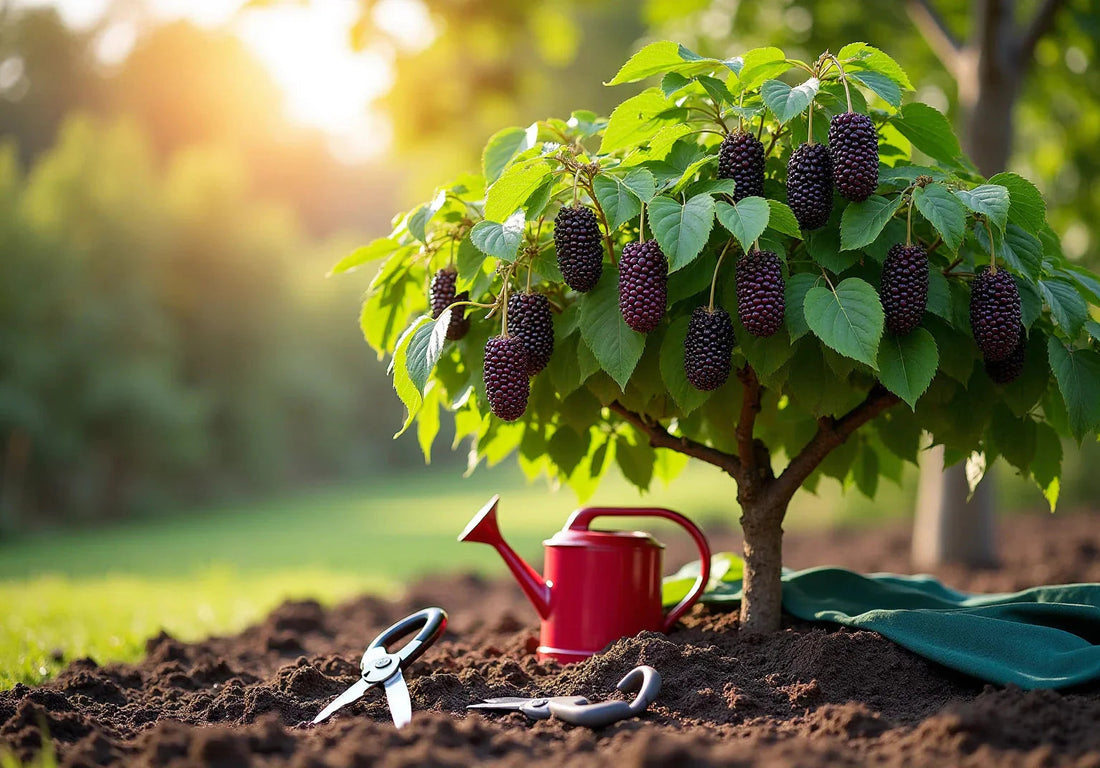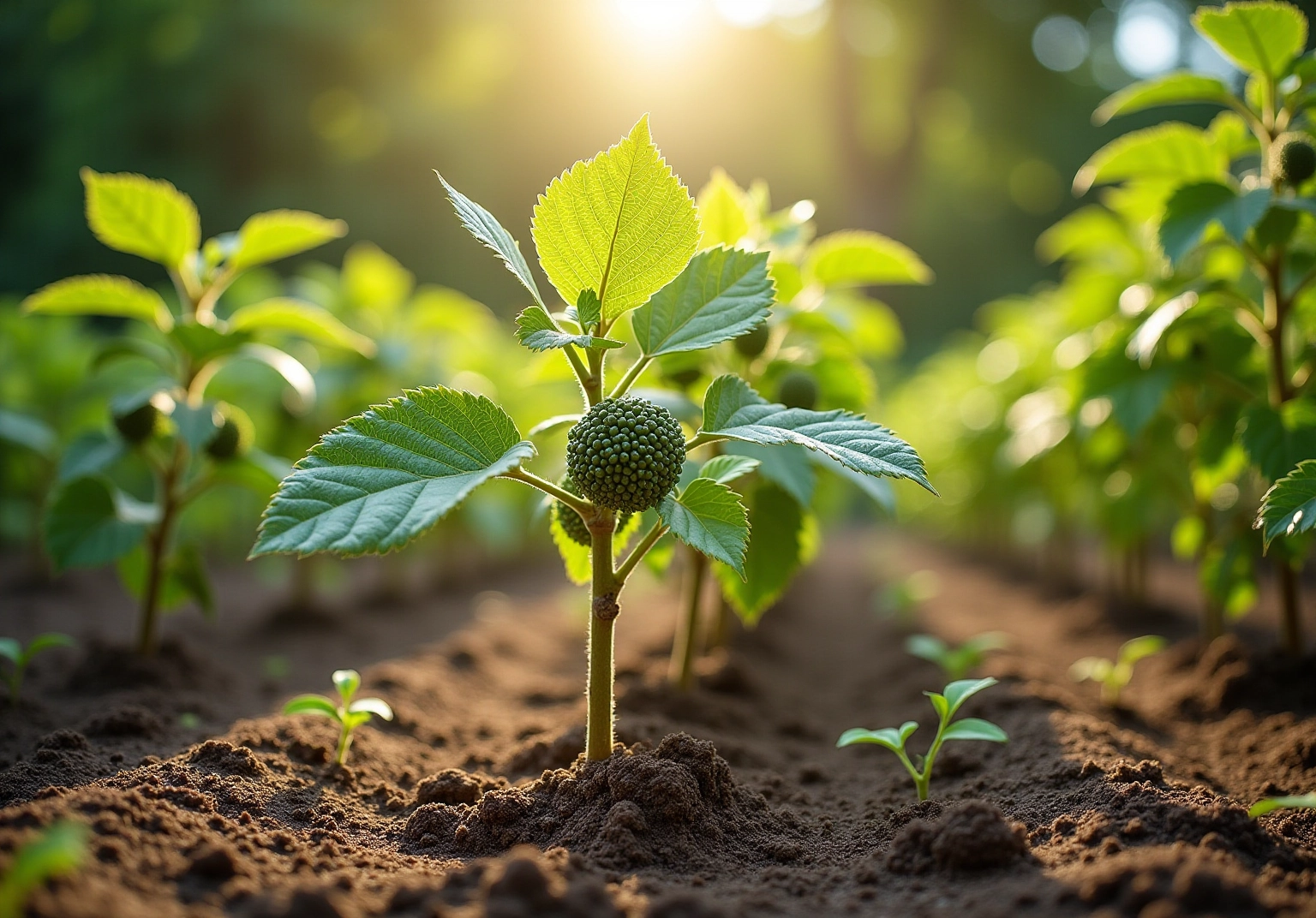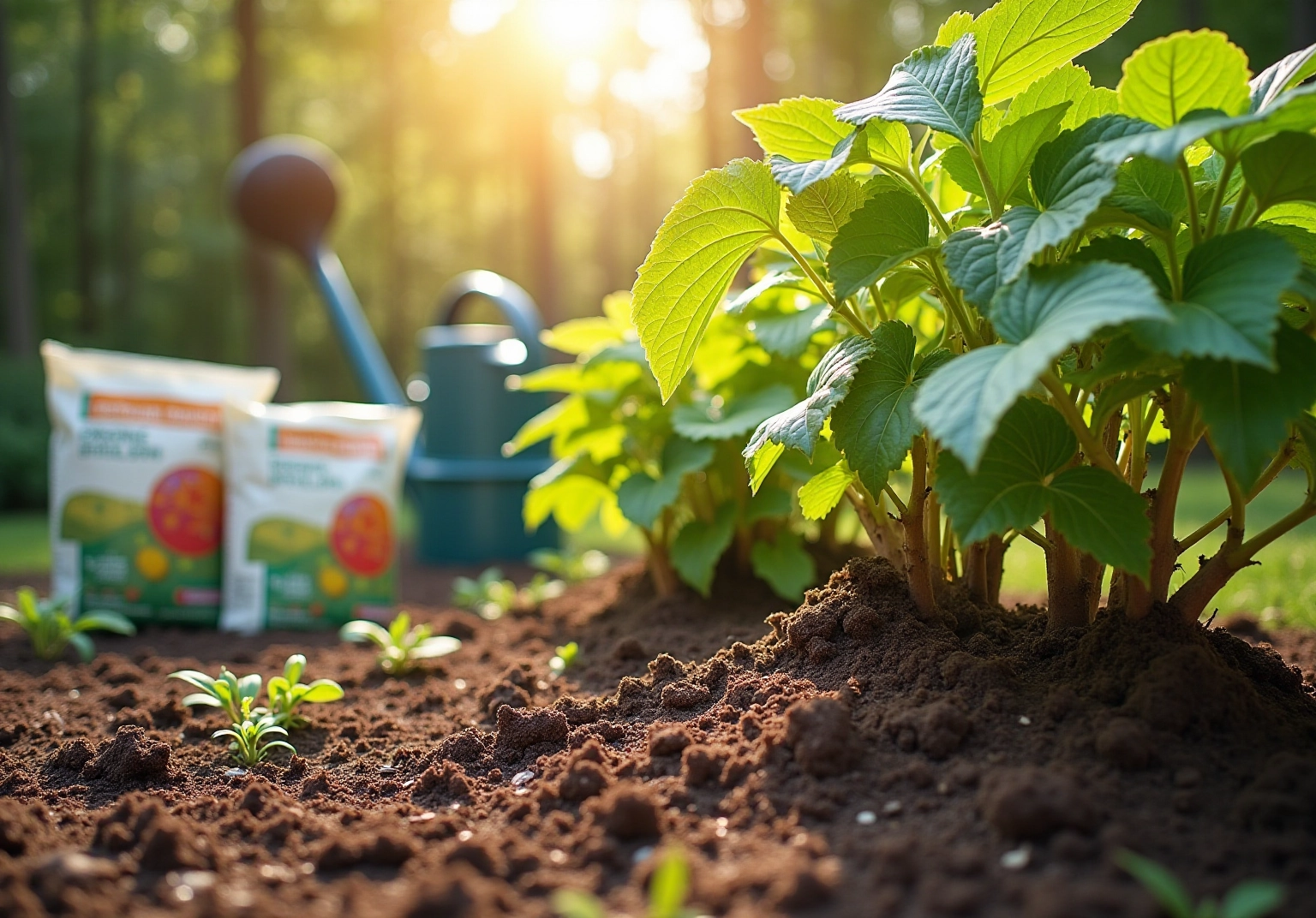
3 Essential Practices for Growing an Organic Mulberry Tree
Share
Cultivating an organic mulberry tree can be a rewarding endeavor, offering both lush foliage and delectable fruit. Understanding the essential practices that underpin successful growth is crucial for any gardener looking to thrive in this pursuit. From establishing the right conditions to mastering care techniques and harvesting methods, the journey to a fruitful mulberry tree is filled with opportunities for learning and growth. However, with various factors at play, such as soil quality and pest management, how can one ensure that their mulberry tree not only survives but flourishes?
Establish Essential Growing Conditions for Mulberry Trees
Mulberry plants are well-suited to bright sunlight, requiring a minimum of 6 hours of direct exposure daily. They flourish in well-drained, loamy soil with a slightly acidic pH, ideally between 5.5 and 6.5. To enhance the planting site, it is beneficial to enrich the soil with organic matter, such as compost or well-rotted manure. Although these berries exhibit drought resistance once established, maintaining consistent moisture is critical during their initial growing season. It is advisable to water deeply, providing approximately 2 to 3 gallons per week, especially during dry spells.
Furthermore, proper spacing is essential; saplings should be planted 15 to 20 feet apart to accommodate their expansive root systems and canopy growth, which promotes healthy development and fruit production. Notably, mulberry plants can begin yielding fruit in just 2-3 seasons when cultivated from a graft or cutting, and they are self-fertile, requiring only a single plant to produce fruit. Their resilience enables them to thrive even in suboptimal conditions, making them an excellent choice for home gardeners.

Implement Effective Care Techniques for Optimal Growth
To encourage optimal development of mulberry plants, consistent care is essential. This includes crucial aspects such as:
- Watering
- Fertilizing
- Pest management
In the first year, it is important to maintain consistent moisture levels by watering deeply once a week. Once the plants are established, you can reduce the frequency of watering but should remain vigilant for signs of drought stress.
Fertilization should take place in early spring using a balanced organic fertilizer. Apply it uniformly beneath the canopy while avoiding a 2-inch zone around the trunk to prevent root burn. Regular monitoring for pests like aphids and spider mites is crucial; if detected, natural remedies such as insecticidal soap or neem oil can be effective solutions.
Furthermore, placing mulch around the base of the plant assists in:
- Moisture retention
- Weed control
- Overall enhancement of soil health
This holistic approach not only boosts the vitality of your fruit-bearing plant but also aligns with sustainable gardening practices.

Master Pruning and Harvesting Techniques for Maximum Yield
Pruning the organic mulberry tree is best conducted during its dormant period, particularly in late winter. This timing minimizes stress on the plant and decreases the risk of sap bleeding, thereby promoting healthy regrowth. Focus on eliminating dead, diseased, or crossing branches to enhance the plant's structure and maintain an open canopy, which allows sunlight to reach all areas.
For optimal harvesting, it is essential to wait until the berries are fully ripe, as indicated by their deep color and softness. Hand-picking is an effective method, or you can place a tarp under the plant to catch falling fruit. Gently shaking the branches encourages ripe berries to drop onto the tarp, simplifying collection. Regular harvesting stimulates further fruit production, as the organic mulberry tree continues to yield throughout the growing season.
Experts advise that when trimming, never remove more than a quarter of the tree to preserve its health and productivity; as Brie Zettl mentions, "never remove more than a quarter of the tree when trimming." Additionally, it is advisable to avoid trimming during extreme cold to prevent harm from freezing temperatures.
For trimming, utilizing sharp tools such as Fiskars 5/8" bypass shears, priced at $20.99, can assist in achieving clean cuts and lowering the risk of disease. This comprehensive approach to pruning and harvesting will ensure a robust harvest year after year.

Conclusion
Growing an organic mulberry tree is a rewarding endeavor that offers not only delicious fruit but also enhances the beauty of any garden. By establishing optimal growing conditions, implementing effective care techniques, and mastering pruning and harvesting, gardeners can ensure a thriving and productive tree.
Key practices for cultivating a healthy mulberry tree include:
- Providing ample sunlight and well-drained soil
- Maintaining consistent moisture
- Utilizing organic fertilizers
- Regular monitoring for pests
- Strategic use of mulch
Additionally, proper pruning during dormancy and timely harvesting of ripe berries are crucial for maximizing yield and promoting ongoing fruit production.
Ultimately, cultivating an organic mulberry tree transcends a mere gardening project; it presents an opportunity to engage in sustainable practices that benefit both the environment and personal health. By adhering to these essential practices, gardeners can enjoy the fruits of their labor while contributing to a greener planet. Embrace the journey of growing an organic mulberry tree and savor the sweet rewards it brings.
Grow Your Own Delicious Mulberries Today!
Start your sustainable gardening journey with Everglades Farm and enjoy the sweet rewards of homegrown fruit.
👉🏻 Shop White Mulberry Tree
👉🏻 Shop Pakistan Red Mulberry Tree
👉🏻 Shop Mulberry Dwarf Everbearing Tree
👉🏻 Explore Mulberry Collection
Frequently Asked Questions
What are the sunlight requirements for mulberry trees?
Mulberry trees require a minimum of 6 hours of direct sunlight daily to thrive.
What type of soil is best for mulberry trees?
Mulberry trees flourish in well-drained, loamy soil with a slightly acidic pH, ideally between 5.5 and 6.5.
How can I improve the planting site for mulberry trees?
To enhance the planting site, it is beneficial to enrich the soil with organic matter, such as compost or well-rotted manure.
How much water do mulberry trees need during their initial growing season?
It is advisable to water mulberry trees deeply, providing approximately 2 to 3 gallons per week, especially during dry spells.
What is the recommended spacing when planting mulberry saplings?
Saplings should be planted 15 to 20 feet apart to accommodate their expansive root systems and canopy growth.
How quickly can mulberry trees start producing fruit?
Mulberry trees can begin yielding fruit in just 2-3 seasons when cultivated from a graft or cutting.
Do mulberry trees require more than one plant to produce fruit?
No, mulberry trees are self-fertile, meaning only a single plant is needed to produce fruit.
Are mulberry trees resilient to poor growing conditions?
Yes, mulberry trees are resilient and can thrive even in suboptimal conditions, making them an excellent choice for home gardeners.

